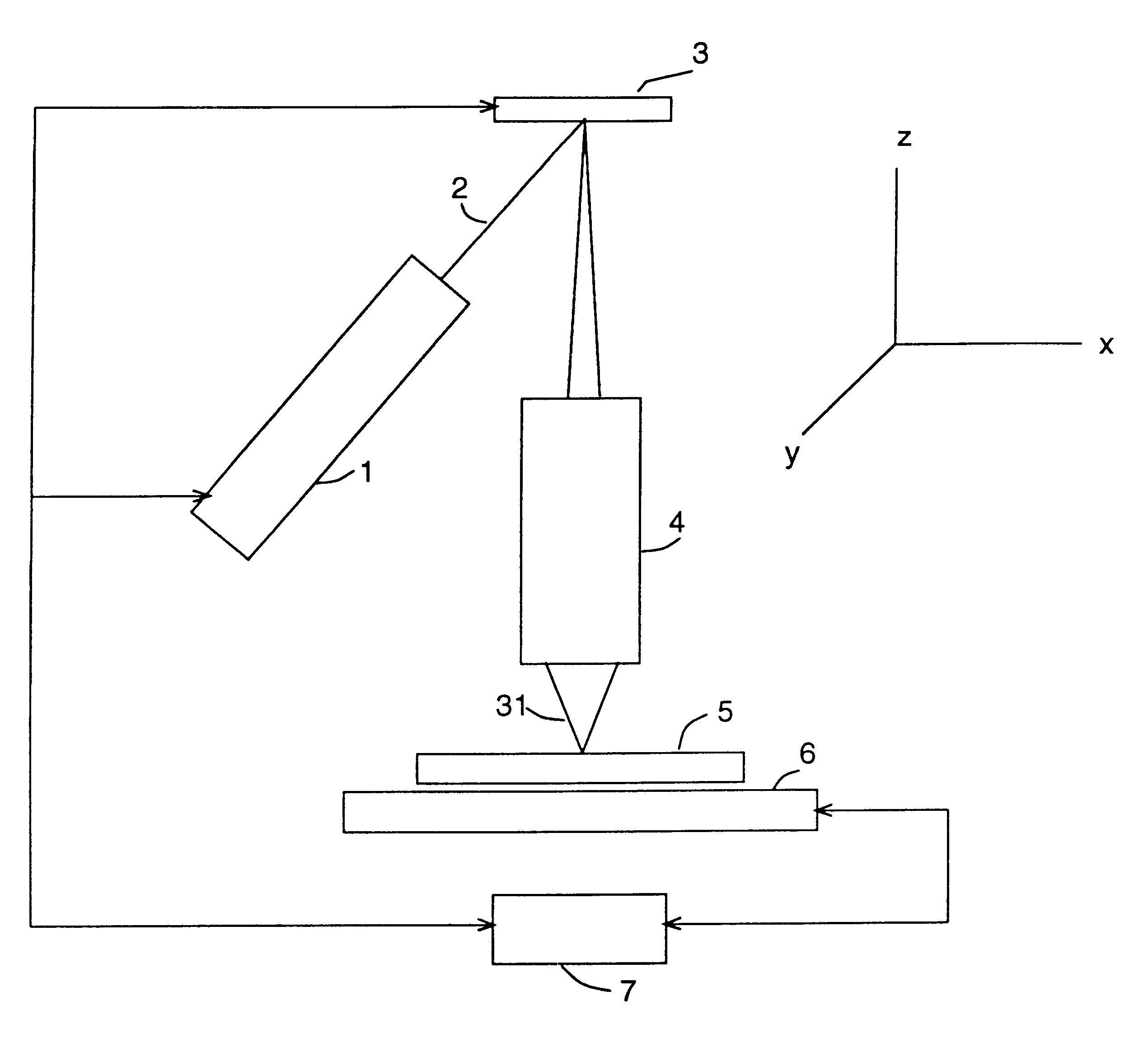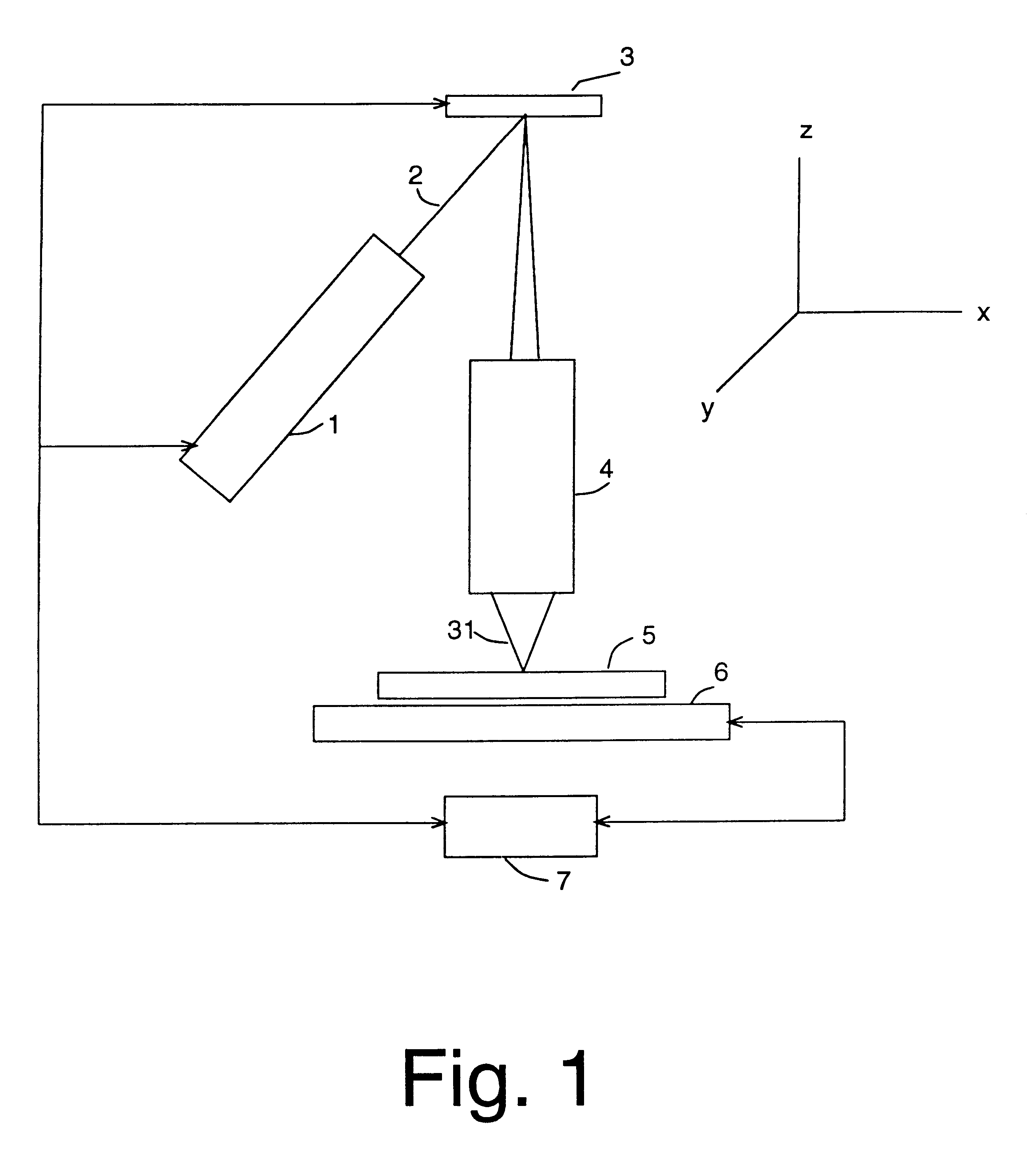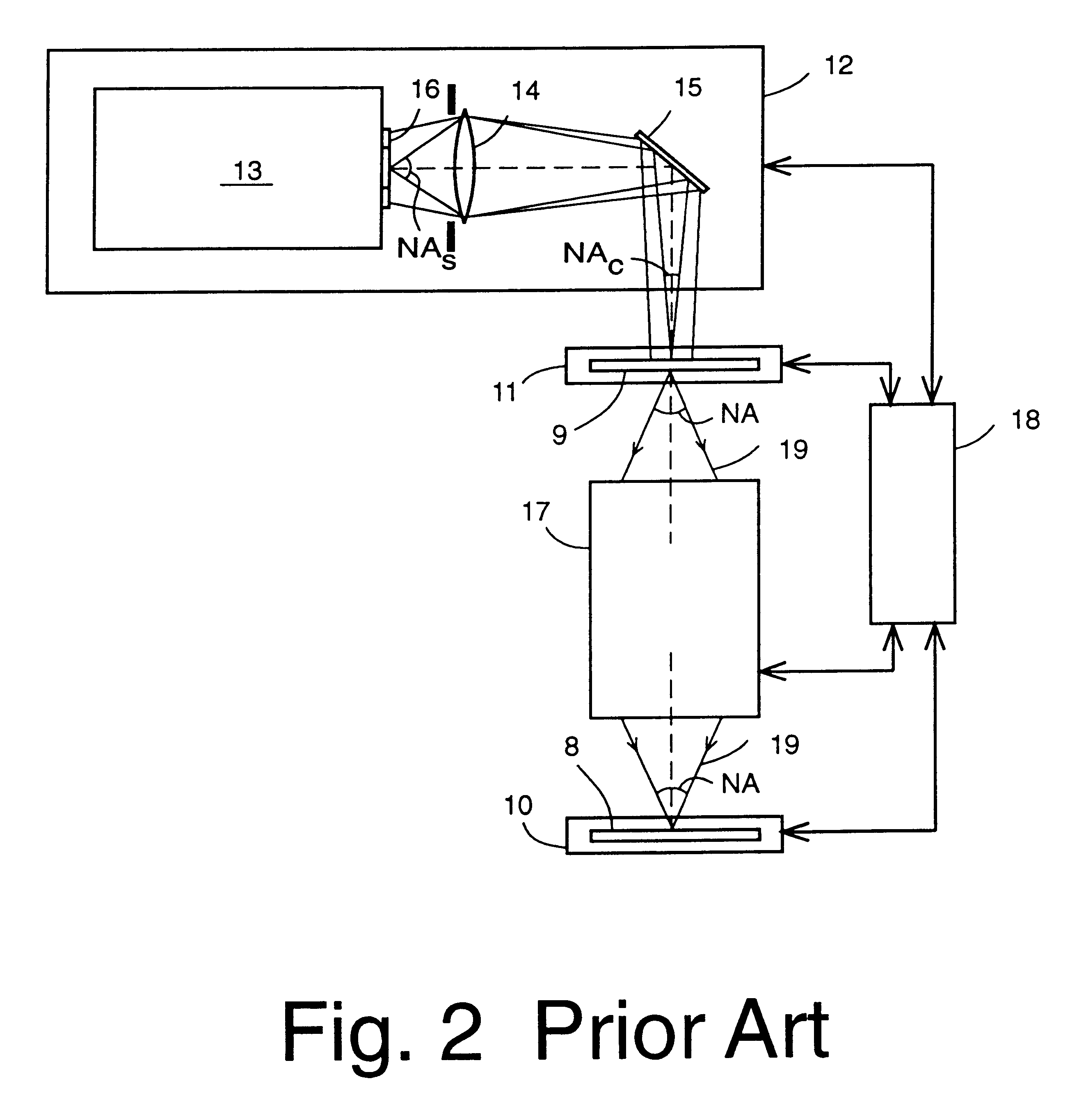Seamless, maskless lithography system using spatial light modulator
a lithography system and mask technology, applied in the field of maskless, maskless lithography system using spatial light modulator, can solve the problems of significant fraction of the cost of integrated circuit (ic) manufacturing, significant drag on the time required to build electronic module prototypes, and the cost of maintaining an array, so as to eliminate the need for masks and high exposure throughput , the effect of high resolution
- Summary
- Abstract
- Description
- Claims
- Application Information
AI Technical Summary
Benefits of technology
Problems solved by technology
Method used
Image
Examples
Embodiment Construction
FIG. 1 is a schematic illustration of a preferred embodiment of the maskless lithography system. The illumination for exposure is provided by a radiation source 1 with output beam 2. The output beam 2 then illuminates a spatial light modulator, shown in FIG. 1 as a deformable micromirror device (DMD) 3, which is an array of micromirrors on a chip with electronic logic, memory and control that enable the individual mirrors to tilt in different directions for selective reflection or deflection of individual pixels. The illuminated DMD pixels which are reflective are imaged by a projection lens 4 onto a substrate 5 which rests on a scanning stage 6. The reduction power of the lens determines the resolution of the invention for a particular DMD pixel size. For example, a lens with reduction of 10:1 will produce a pixel size on the substrate which is one tenth the size of an individual micromirror.
The substrate is scanned as shown in FIG. 1 along, say, the y-axis. Simultaneously, control...
PUM
| Property | Measurement | Unit |
|---|---|---|
| diameter | aaaaa | aaaaa |
| diameter | aaaaa | aaaaa |
| diameter | aaaaa | aaaaa |
Abstract
Description
Claims
Application Information
 Login to View More
Login to View More - R&D
- Intellectual Property
- Life Sciences
- Materials
- Tech Scout
- Unparalleled Data Quality
- Higher Quality Content
- 60% Fewer Hallucinations
Browse by: Latest US Patents, China's latest patents, Technical Efficacy Thesaurus, Application Domain, Technology Topic, Popular Technical Reports.
© 2025 PatSnap. All rights reserved.Legal|Privacy policy|Modern Slavery Act Transparency Statement|Sitemap|About US| Contact US: help@patsnap.com



